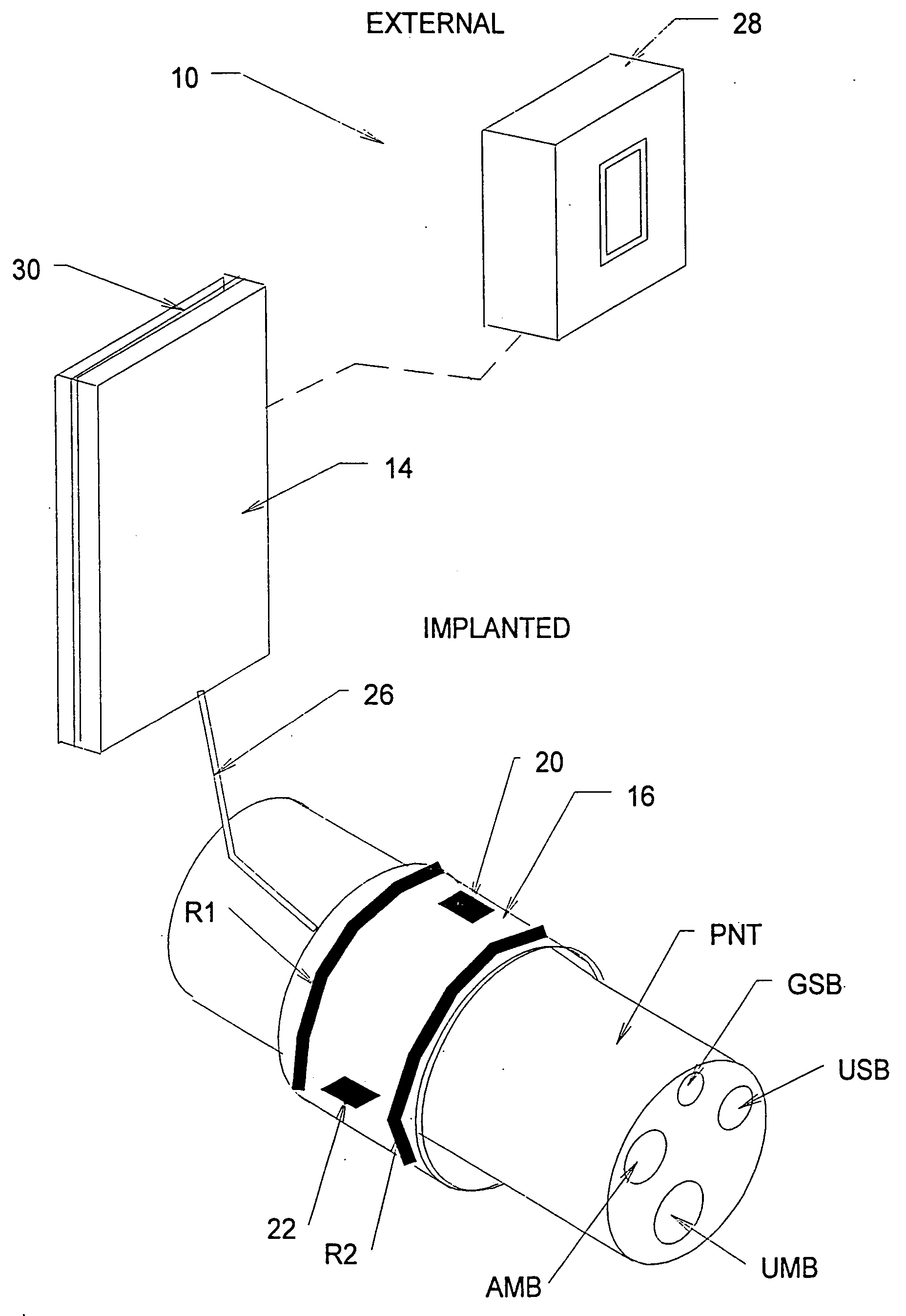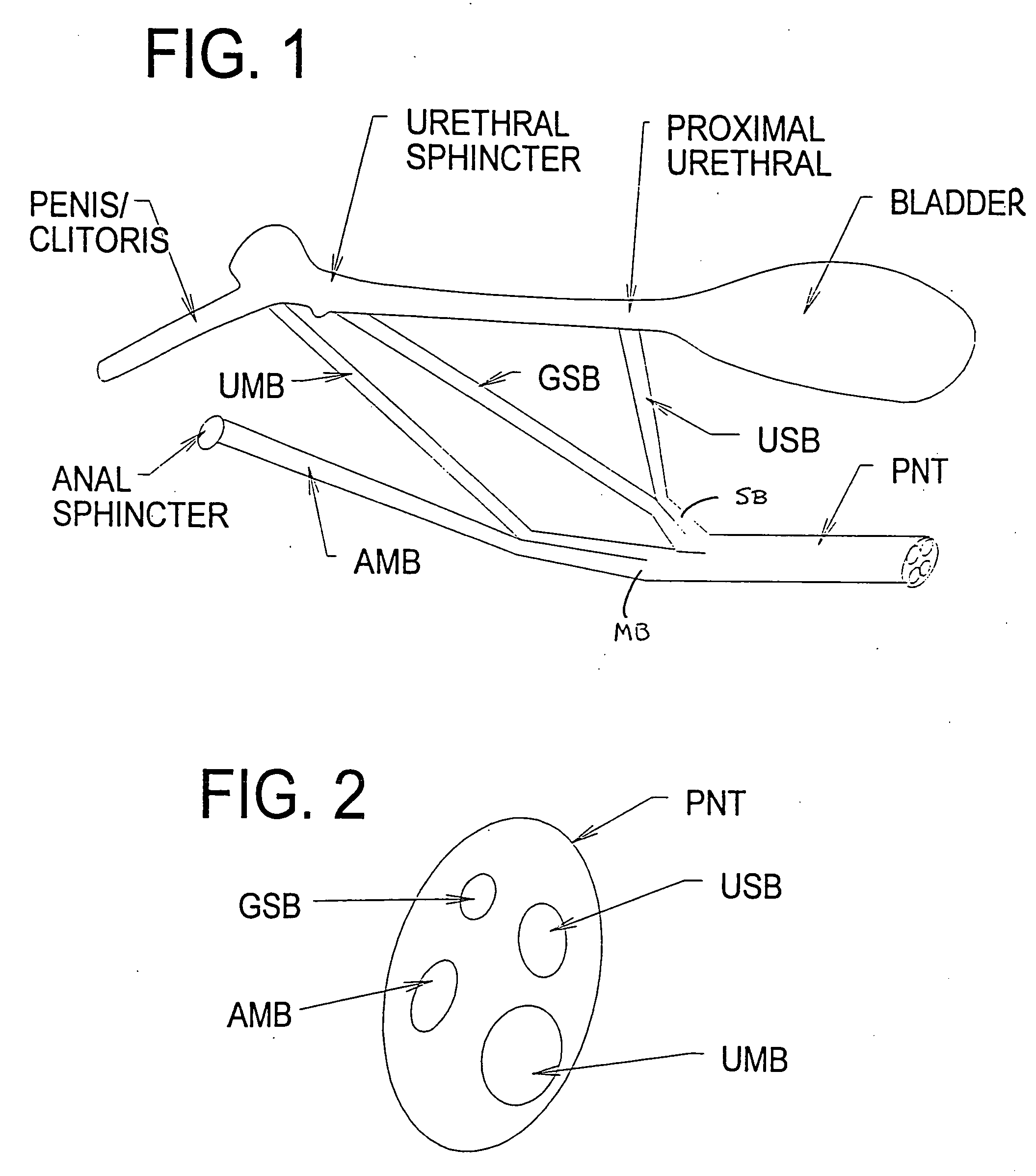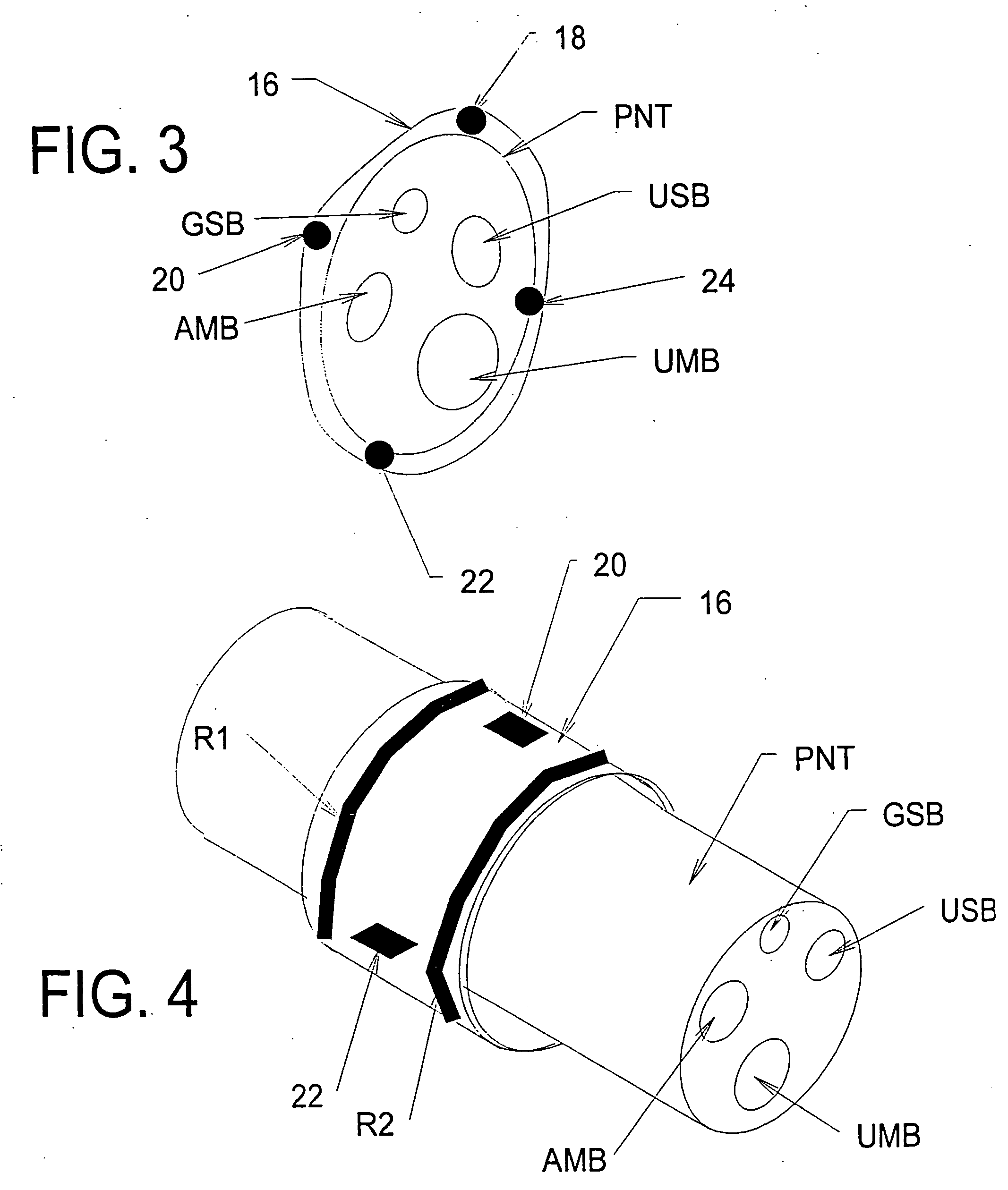Systems and methods for selectively stimulating components in, on, or near the pudendal nerve or its branches to achieve selective physiologic responses
a technology of pudendal nerve and component, applied in the field of system and method of stimulating nerve in animals, can solve the problems of inability to empty the bladder voluntarily, paralysis of the bladder, and inability to function as a whole, so as to facilitate defecation, reduce activity, and increase the contraction of the rectum
- Summary
- Abstract
- Description
- Claims
- Application Information
AI Technical Summary
Benefits of technology
Problems solved by technology
Method used
Image
Examples
Embodiment Construction
[0046] The various aspects of the invention will be described in connection with achieving the detection of nerve activity within and / or stimulation of targeted nerve components or fascicles within complex or compound nerve structures throughout the body. For the purpose of illustration, the invention will be disclosed in the context of the compound pudendal nerve trunk or its branches located away from the sacral root, to achieve desired physiological results in the lower urinary tract, and / or the lower bowel, and / or genital regions. That is because the features and advantages that arise due to the invention are well suited to this purpose. Still, it should be appreciated that the various aspects of the invention can be applied elsewhere in the body to achieve other objectives as well.
I. Anatomy of the Compound Pudendal Nerve Trunk
[0047] The pudendal nerve trunk (PNT) carries afferent (sensory) and efferent (motor) nerve components that innervate muscles and organs in the lower ...
PUM
 Login to View More
Login to View More Abstract
Description
Claims
Application Information
 Login to View More
Login to View More - R&D
- Intellectual Property
- Life Sciences
- Materials
- Tech Scout
- Unparalleled Data Quality
- Higher Quality Content
- 60% Fewer Hallucinations
Browse by: Latest US Patents, China's latest patents, Technical Efficacy Thesaurus, Application Domain, Technology Topic, Popular Technical Reports.
© 2025 PatSnap. All rights reserved.Legal|Privacy policy|Modern Slavery Act Transparency Statement|Sitemap|About US| Contact US: help@patsnap.com



